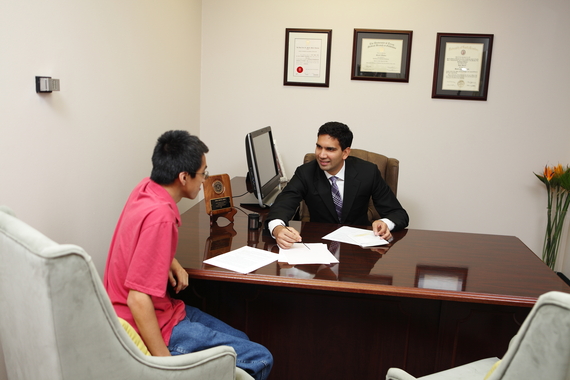
Throughout the country, a revolution is happening in health care. Frustrated by insurance regulations, increasing paperwork and limited time to see complicated patients, a group of primary care physicians are leading a movement. It's called direct primary care, and it could change your health.
Stressed doctors, unhappy patients
To discuss where primary care is going, we must first start with where it is now. It is projected that the United States will require nearly 52,000 additional primary care physicians by 2025. However in a study published by the Commonwealth Fund in 2012, 30 percent of physicians between the ages of 35 to 49 were expected to quit within the next five years. In fact, in 2011, only 7 percent of medical school graduates chose a career in primary care.
We are in a system that undervalues primary care. Medicare pays almost three times as much for a colonoscopy than it does for a preventive primary care office visit. With increasing patient demand and decreasing reimbursement rates, physicians are in a system that requires them to see patients almost every 10 minutes to keep their doors open. Furthermore, larger organizations pressure physicians to report on their "productivity," which treats patients as numbers rather than people. The result is stressed doctors and unhappy patients.
The transition to direct primary care
In 2012, working at the frontline of health care, Dr. Sunil Movva found himself spending more time on paperwork than patients. "I was so frustrated in the current model," said Movva. "Patients couldn't get in to see their doctors in a timely manner. They had to wait six months to see their primary care physicians. I thought that there has to be a better way."
So Dr. Movva created a better way. He founded a direct care practice called Integrated Health in Houston, Texas. Dr. Charu Sawhney and Dr. Geetu Goyal later joined him in 2014 after they experienced similar frustrations in the current system.
The foundation of direct primary care is adequate time spent between doctors and patients. Direct care practices do not take insurance but for a monthly fee of less than $100, patients are offered longer visits with their physicians, same- or next-day appointments and the ability to communicate with their doctors through email and even video conferencing. Patients then look for less expensive insurance policies as they only require coverage for hospitalizations, surgeries and specialist care.
"Our price includes basic labs, and we look for discounted medications and offer discounted imaging services," said Dr. Movva. "People assume that everything should be covered by insurance. Then they go to their doctor and find that insurance doesn't cover everything and they get a huge bill. Then they come to me because in this model, there are no surprises."
Dr. Sawhney echoed similar sentiments. "Before, many patients could not come back to see me because with a co-pay of $20-$40 for each visit, things began to add up. Now, instead of paying co-pay each time, they just pay a flat monthly fee. There is no interruption in their health care and we make sure they stay out of the ER and hospital as much as possible."
Greater access to physicians, better care
When Dr. Amie Stringfellow's husband told her about a doctor he had heard on the radio talking about direct primary care, she knew that she had to learn more.
"I was at the point where I was frustrated with all the regulations I had to deal with. I started investigating direct care, and it was a great fit for me," said Dr. Stringfellow.
Shortly afterwards, she started her direct care practice called Milepost Medical in Houston. "It answers the frustrations of both patients and physicians. When I told my patients that I had a system that could solve their issues, they asked me where they could sign up," said Dr. Stringfellow. "Insurance does serve a purpose, but in primary care it complicates things. In the traditional system, we find practices that order unnecessary tests just to stay open, which is not necessarily what is best for the patient."
Dr. Sawhney further explained that direct care offers an avenue to be flexible in how you treat patients. "In the traditional system, nothing counts except for face to face interactions. But medicine needs to catch up to technology. You can take care of many issues over phone, email and video conferencing."
A large part of primary care is preventive care. If you build a system where patients have access and time with their physicians, you are tackling chronic disease on the frontlines. While the current fee for service model pays for treating disease and not preventing it, direct primary care focuses on prevention.
When patients get good preventive care, their health issues are addressed before they develop into crisis situations. Patients avoid the emergency room because their primary care physician has the time and resources to concentrate on patients instead of paperwork.
"Health care more than any other business survives on human to human connections. Education, prevention and human connection do not happen if you don't have time with your patients. Direct care focuses on these key aspects," said Dr. Goyal.
Happier physicians, healthier patients
Stephanie Lutrick is a patient of Dr. Movva and has diabetes, high blood pressure and asthma. She once spent nine hours waiting to be seen in the emergency room because she could not get in touch with her primary care doctor. But things have changed for her now.
"For less than $100 per month, my entire family has access to see Dr. Movva. This enables me to stay on top of my diabetes, asthma and high blood pressure. Not only do I have the option to go to his office, but I also have his private number. If I email, text or call him, I get a quick response back. Who does that?" said Lutrick. "I have only been hospitalized once in the last three years and it is because I have the openness and accessibility to my doctor. Even my blood work and medications are affordable. What he has introduced to us has been such a blessing. It saved my husband's life."
"You feel like you are making a difference," said Dr. Movva. "You are practicing the medicine that you wanted to when you first started. Every day you go to work and you don't feel hurried. It's wonderful."
While some may argue that direct care will worsen the physician shortage as doctors taken on fewer patients, Dr. Stringfellow disagrees. "This provides an alternative for doctors that were leaving the system anyways because they were retiring early or burnt out. This keeps more doctors in the system seeing patients and makes primary care more attractive to medical students," she said.
There is a revolution happening in health care and it is bringing the focus back on the patient. It is helping physicians re-discover the joy of medicine. You may not have heard of direct primary care before, but like all revolutions, change starts quietly.
"If we have to fix our system, we have to make primary care better and attractive for trainees, " said Dr. Goyal. "We have to make people realize the value of primary care. I'm convinced that this is the future of medicine."
